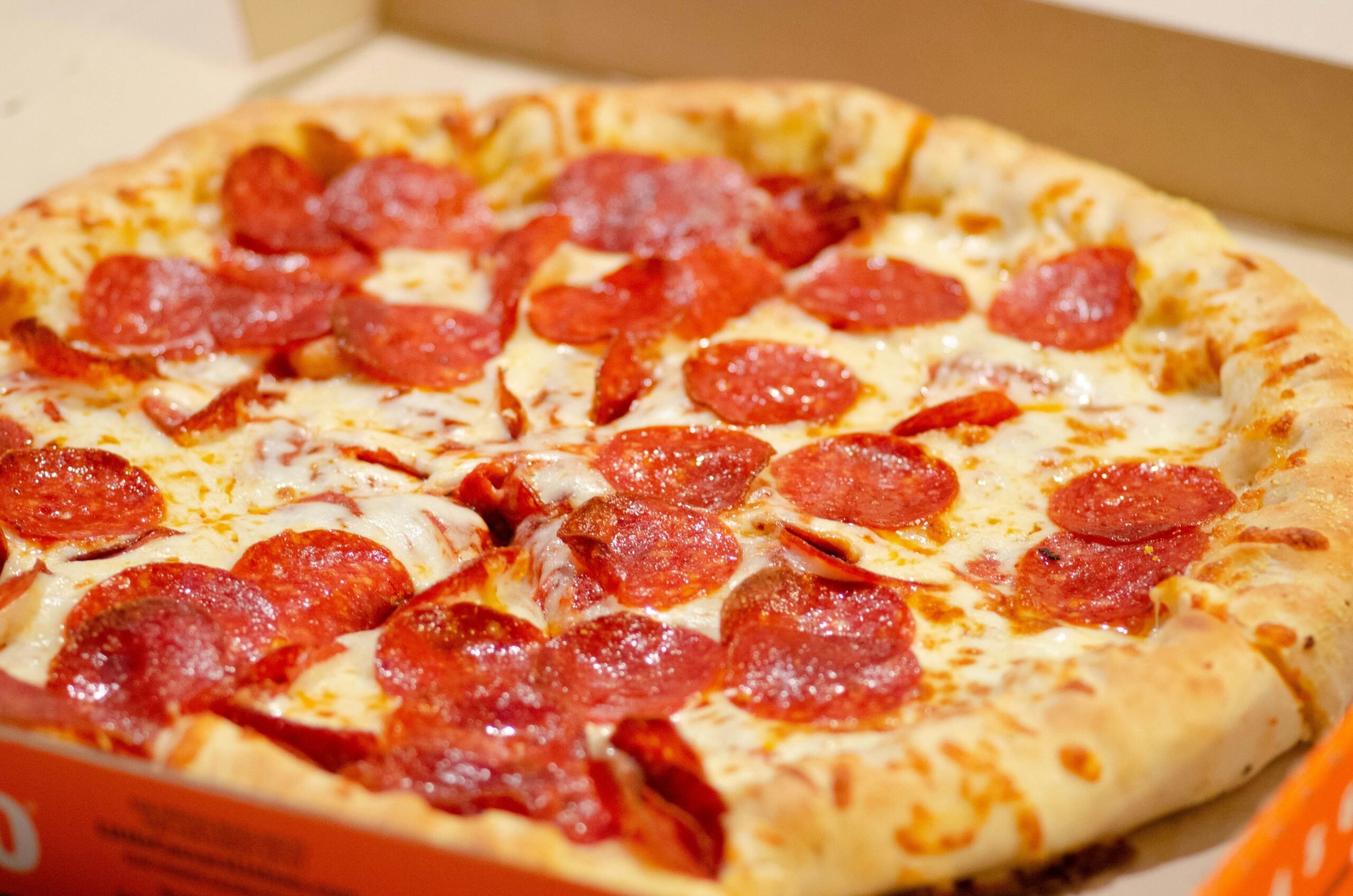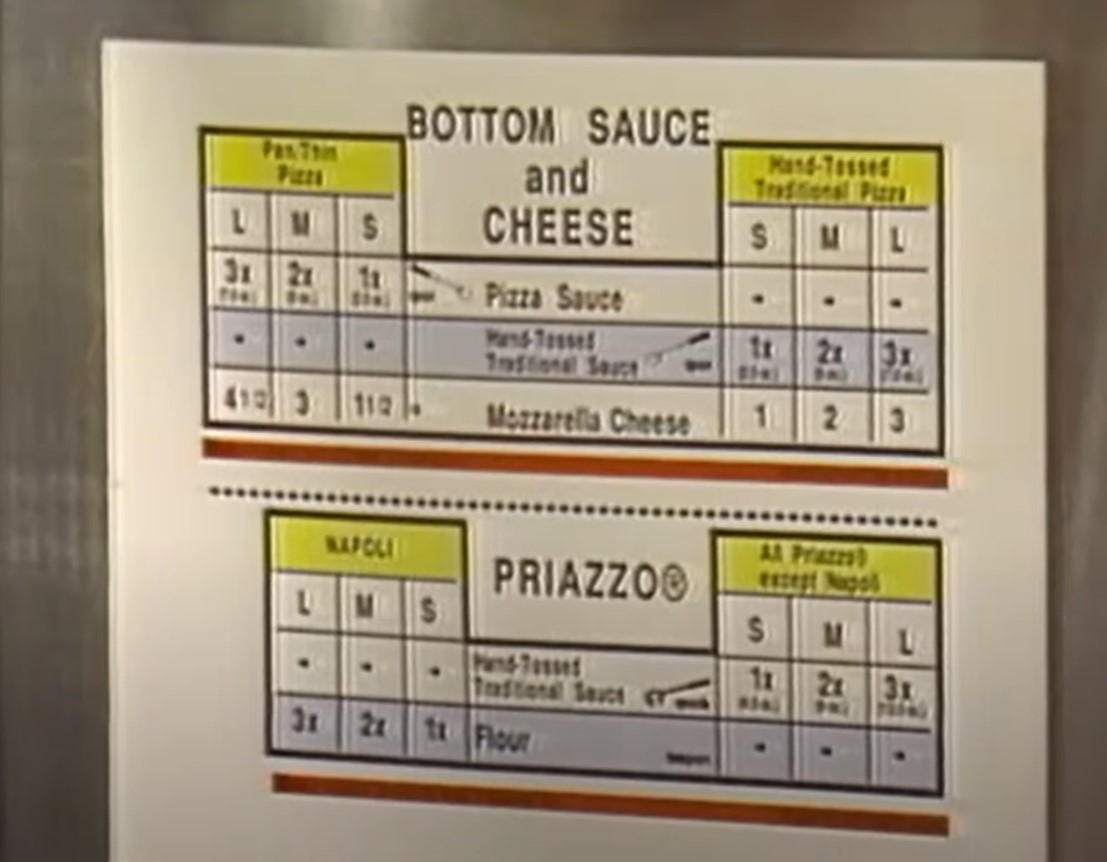When you think of the best pizza in the world, Italy typically comes to mind, adorned with picturesque landscapes and centuries of culinary tradition. Yet, here in the concrete jungle of New York, we have a pizza renaissance that would make any Italian nonna raise an eyebrow—or possibly a slice. With its foldable slices and a crust that defies the laws of physics, New York pizza offers a unique blend of flavors and textures that keep locals coming back for more, often while juggling a coffee in the other hand. Curious about how this culinary rivalry unfolds?
New York's Pizza Ranking
Celebrating the rich tapestry of pizza culture, New York City has recently claimed the spotlight on the global stage, much to the delight (and perhaps envy) of pizza lovers everywhere.
In a stunning culinary competition that has left even the most loyal Neapolitans scratching their heads, Una Pizza Napoletana has been crowned the best pizzeria in the world, a title previously thought to be forever tethered to Naples. Talk about stealing the pizza thunder!
With 15 American pizzerias making the illustrious "50 Top Pizza" list, it's clear that New York is no longer just a place for Broadway and bagels. Notably, Roberta's pizza is renowned for its unique wood-fired pies, which have significantly contributed to the city's pizza popularity.
The city's pizzerias are now the stars of pizza tourism, drawing food enthusiasts who are keen to taste the doughy delights that have garnered international acclaim.
As people flock to experience the acclaimed slices from Una Pizza Napoletana, Lucali, and Juliana's, it's evident that New York's pizza scene is not just about eating; it's a full-blown cultural phenomenon.
Unique Features of New York Pizza
When it comes to New York pizza, the unique features are as iconic as the city itself, enchanting locals and tourists alike. The crust characteristics are the star of the show—a thin, light foundation that can withstand the weight of toppings while still being foldable. Yes, the folding technique is essential; it's the secret handshake of pizza lovers, allowing you to enjoy a slice without the toppings taking a dive.
| Feature | Description |
|---|---|
| Thin Crust | Delicate yet sturdy, perfect for folding. |
| Crispy Edges | A delightful textural contrast to the center. |
| Light and Manageable | Easier to indulge in multiple slices! |
Picture this: You're standing on a bustling New York street, slice in hand, expertly folding it in half, and taking that first glorious bite. The crispy edges are an invitation to savor every moment. Each slice is a delightful experience, a blend of tradition and culinary prowess, making New York pizza not just a meal, but a rite of passage for anyone seeking true pizza freedom. The hand-tossed dough technique adds to the unique visual and textural appeal of this beloved dish.
Ingredients That Make the Difference
When it comes to pizza, the magic really happens in the kitchen, where dough, sauce, and cheese form a triumvirate that rivals any great love story.
You've got your bread flour, sugar, and a dash of optimism for the dough, while the sauce begs for San Marzano tomatoes and a sprinkle of garlic to awaken its inner diva. The right high-quality tomatoes can elevate your sauce from ordinary to extraordinary.
And let's not forget the cheese—because if you think mozzarella is just a topping, you clearly haven't experienced its gooey, melty potential in all its glory!
Dough Quality Matters
The perfect pizza begins with its foundation: the dough. It's like the friendship of pizza; if it's not solid, everything else crumbles.
Think of dough hydration as the spa day for your flour—a little moisture goes a long way in creating that divine crust. Too little, and it's like trying to dance in a pair of tight shoes. Too much, and you'll end up with a puddle instead of a pizza.
Yeast fermentation is the magic potion that transforms a lump of flour and water into a delightful creation. Picture tiny yeast soldiers marching to the beat of carbon dioxide, rising to the occasion and giving us that airy, chewy texture we crave. Proofing yeast before mixing it with other ingredients ensures you achieve that perfect rise.
The choice of flour matters too; whether you lean towards the gluten-rich bread flour or the delicate 00 flour, each option brings its own personality to the table.
And let's not forget about salt and sugar—nature's way of reminding us that life is all about balance.
When it comes to dough, the right ingredients and techniques can elevate your pizza from ordinary to legendary, leaving your taste buds singing with joy.
Sauce Preparation Techniques
Crafting a great pizza is much like putting together a harmonious band—each ingredient must play its part just right. The sauce is the lead singer, and if it doesn't hit the right notes, the whole performance can fall flat. The secret to a show-stopping pizza sauce lies in the preparation techniques and the delicate dance of sauce thickness and flavor balance. Cooking the sauce enhances flavor depth and richness, making it an essential step in the process.
Consider these essential sauce components:
| Ingredient Type | Description | Purpose |
|---|---|---|
| Tomato Varieties | San Marzano for rich flavor | Base flavor |
| Texture Control | Smooth puree or hand-crushed | Creates desired consistency |
| Seasoning Balance | Oregano, basil, garlic | Elevates the sauce's flavor |
Whether you prefer a thick, hearty sauce or a thinner, more delicate version, knowing when to add salt and how long to cook can make all the difference. Remember, tasting as you go is your best friend—don't be afraid to adjust! So next time you're making sauce, channel your inner maestro, and let each ingredient sing its part. Happy pizza making!
Cheese Selection Variations
Choosing the right cheese for your pizza can feel a bit like dating—sometimes, it's all about finding that perfect match that complements your unique tastes.
One moment you're on a mozzarella kick, basking in its stretchy, gooey embrace, and the next, you're tempted by provolone's smooth charm, perfect for those mushroom and onion rendezvous.
And let's not forget cheddar, the bold one in the group, bringing tanginess that pairs beautifully with bacon and jalapeños. Mozzarella is renowned for its excellent meltability, making it an essential choice for traditional pizza lovers.
If you're feeling adventurous, gorgonzola adds a pungent earthiness, elevating your pie to gourmet status, especially alongside caramelized onions or sweet figs.
The beauty of cheese blends becomes apparent when you mix these flavors.
A hint of ricotta offers a creamy texture that softens the boldness of sharper cheeses, while Monterey Jack adds a versatile base for layering flavors.
The magic of pizza lies in these combinations—each cheese contributes its own flavor profile, crafting a symphony that dances on your palate.
Cooking Methods Compared
When it comes to cooking methods for pizza, the battle between New York style and traditional Italian techniques often feels like a culinary showdown straight out of a foodie's dream.
Imagine New Yorkers racing against the clock, tossing their pizzas into blazing high-temperature gas ovens, where crispy crusts emerge faster than you can say "extra cheese." Those high cooking temperatures are the secret to that delightful crunch, making it perfect for the fast-paced life of the city. Additionally, using a pizza stone can enhance the crispiness of the crust, making it a favorite among home bakers.
On the flip side, we have traditional Italian pizza, which is lovingly baked in wood-fired ovens. Here, authenticity reigns supreme, and while the cooking time is a mere 90 seconds, the smoky flavor is a game-changer. However, controlling the heat can feel like trying to tame a wild beast—unpredictable but oh-so-rewarding.
Both methods aim for that perfect crust texture, but their paths are as different as a New Yorker and a Roman arguing over the right way to fold a slice.
Whether it's the crispy charm of New York or the rustic allure of Italy, each method has its own delicious merits—and the pizza lover in us can't help but appreciate both.
Historical Roots of Pizza Styles
When you think about pizza, do you ever wonder how a simple flatbread morphed into a worldwide obsession? It's like watching your childhood friend transform from a quiet kid into a rock star—everyone wants a slice of that journey. From ancient Egyptians to Neapolitan bakers, each culture has sprinkled their own story onto this beloved dish, making it more than just food; it's a delicious piece of history. The journey began with early flatbreads that served as practical sustenance across various civilizations, laying the foundation for what we now know as pizza.
Evolution of Pizza Styles
The culinary journey of pizza is a delightful tapestry woven through centuries of innovation and adaptation, showcasing humanity's enduring love for flatbreads topped with a myriad of ingredients.
From the ancient Egyptians whipping up simple flatbreads to the Greeks seasoning dough with herbs, our ancestors clearly had a knack for making the mundane delicious.
Fast forward to the 18th century in Naples, where the pizza transformation took a significant leap. Street vendors catered to factory workers with their quick, satisfying meals—because who has time for a sit-down dinner when there's dough to be tossed? In fact, Naples had a dense population of poor working-class individuals who relied on these convenient meals.
As Italian immigrants journeyed to America, they didn't just bring their recipes; they spiced things up with international adaptations that gave birth to New York-style and Chicago deep-dish pizzas.
Imagine Neapolitans in New York, flipping a pizza while shouting, "Hey, let's add some extra cheese!" The result? A culinary revolution that made pizza a staple of American culture, transcending its humble origins.
Each slice tells a story of cultural fusion, highlighting how this beloved dish evolved from ancient flatbreads to the diverse pizza landscape we savor today.
#
Cultural Significance of Pizza
- Pizza traditions span centuries and continents.
- From humble street food to royal banquets, it's a culinary chameleon.
- Each slice tells a story of cultural exchange and adaptation.
When ancient Egyptians were slathering toppings on flatbreads, they had no idea they were laying the groundwork for our Friday night feasts.
Fast forward to Naples, where 16th-century bakers were innovating with tomatoes (thanks, Americas!) and giving birth to iconic pies like the Marinara and Margherita. Notably, by 1807, 54 pizzerias were documented in Naples, showcasing the growing popularity of this beloved dish.
Talk about a glow-up!
Today, Neapolitan craftsmanship is revered, and pizzerias are aplenty, especially in New York City, where the old-world charm meets a modern twist.
As we savor each slice, we're not just indulging in deliciousness; we're partaking in a global narrative of flavors, traditions, and the ever-expanding definition of what pizza can be.
Isn't that a tasty piece of history?
## Cultural Significance of Pizza
Celebrating pizza is akin to joining a global community where traditions, tastes, and cultures collide deliciously. From ancient flatbreads to the royal endorsement of Queen Margherita, pizza has woven itself into the cultural identity of Italy.
Neapolitans take pride in their pizza, treating it like a sacred art form—who knew dough could earn you street cred?
As Italian immigrants brought this beloved dish to the U.S., they didn't just create a meal; they ignited a culinary revolution. New York pizza, with its thin crust and massive slices, became a cultural phenomenon, embodying the city's fast-paced lifestyle.
It's a slice of life, quite literally!
Globally, pizza serves as a culinary ambassador, adapting to local tastes and celebrating cultural hybridity. Whether it's a Hawaiian pie or a spicy taco pizza, each variation reveals a story of fusion and creativity.
It sits at the center of celebrations, from birthday parties to Friday night takeout, uniting people across continents.
In this delicious journey, pizza is more than food; it's a reflection of our shared human experience and culinary traditions, reminding us that the best things in life are often enjoyed together.
Impact of Recognition on Pizzerias
While many might assume that a great pizza is solely about the ingredients or the oven, the truth is that recognition plays a pivotal role in a pizzeria's success.
Imagine a small pizzeria, cranking out delicious pies, but they're as unnoticed as a cat at a dog show. Effective recognition strategies can turn the tide.
- Unique Brand Identity: Stand out like a slice of pineapple on a pepperoni pie.
- Innovative Marketing: Use social media like it's a fresh batch of dough—knead it until it rises!
- Customer Loyalty: Create loyalty programs that make customers feel like they've hit the pizza jackpot.
When a pizzeria earns acclaim, customer loyalty follows.
Take Una Pizza Napoletana, which didn't just serve pizza; it served a slice of fame. They showcased quality and authenticity, and suddenly, patrons were lining up like it was the latest iPhone launch.
In a world where big chains dominate, local pizzerias must engage with their communities and maintain high standards.
After all, no one wants to be the unnoticed pie in the box!
Preference: New York vs. Italian Pizza
When it comes to the great pizza debate, one might find themselves caught in a delicious tug-of-war between New York and Italian styles.
Imagine this: a New Yorker folding a gigantic slice, cheese stretching like a well-rehearsed magic trick, while an Italian savors a dainty pie, knife and fork in hand, embracing a delicate balance of flavors. It's a classic clash of topping preferences and eating styles.
New York pizza boasts a crust that's crispy yet foldable, perfect for a casual stroll down Broadway. The sauce is thicker and sweeter, making it a bold companion to a plethora of toppings—pepperoni, mushrooms, or whatever your heart desires.
Meanwhile, Italian pizza tantalizes with its airy crust and fresh mozzarella, often adorned with just a few pristine ingredients like basil and San Marzano tomatoes.
In this culinary showdown, nostalgia plays a significant role. New York embodies the hustle and bustle, while Italian pizza whispers of tranquil countryside kitchens.
Whether you're a fan of the hearty, diverse New York slice or the refined elegance of Italian pizza, one thing's for sure: there's no wrong choice in this savory saga. Freedom of preference is the true winner here!
Frequently Asked Questions
What Are the Best Toppings for New York-Style Pizza?
When savoring New York-style pizza, classic toppings like pepperoni and extra cheese reign supreme. However, unique combinations such as prosciutto with arugula can elevate your slice, making each bite a delightful culinary adventure.
How Has Pizza Evolved in New York Over the Years?
Over the years, New York pizza has morphed with cultural influences and regional variations, evolving from Neapolitan roots to an iconic, foldable slice, proving that even pizza knows how to adapt—and survive—amidst change.
Are There Vegetarian Options at Una Pizza Napoletana?
Una Pizza Napoletana offers delightful vegetarian options, featuring a flavorful Marinara pizza sans cheese and a classic Margherita with mozzarella. Each pie boasts a perfectly crafted pizza crust, making it a haven for veggie lovers!
How Does New York's Water Affect Pizza Dough?
New York's water chemistry, often mythologized, subtly influences dough texture, but not in ways that make or break pizza. It's like your favorite pair of jeans; the fit matters more than the fabric!
What Are Some Notable Pizzerias in New Jersey and Connecticut?
When exploring pizza, New Jersey and Connecticut shine with gems like Patsy's Tavern and Frank Pepe's. Each offers unique flavors, nostalgic experiences, and a slice of local culture that beckons pizza lovers from all corners.




